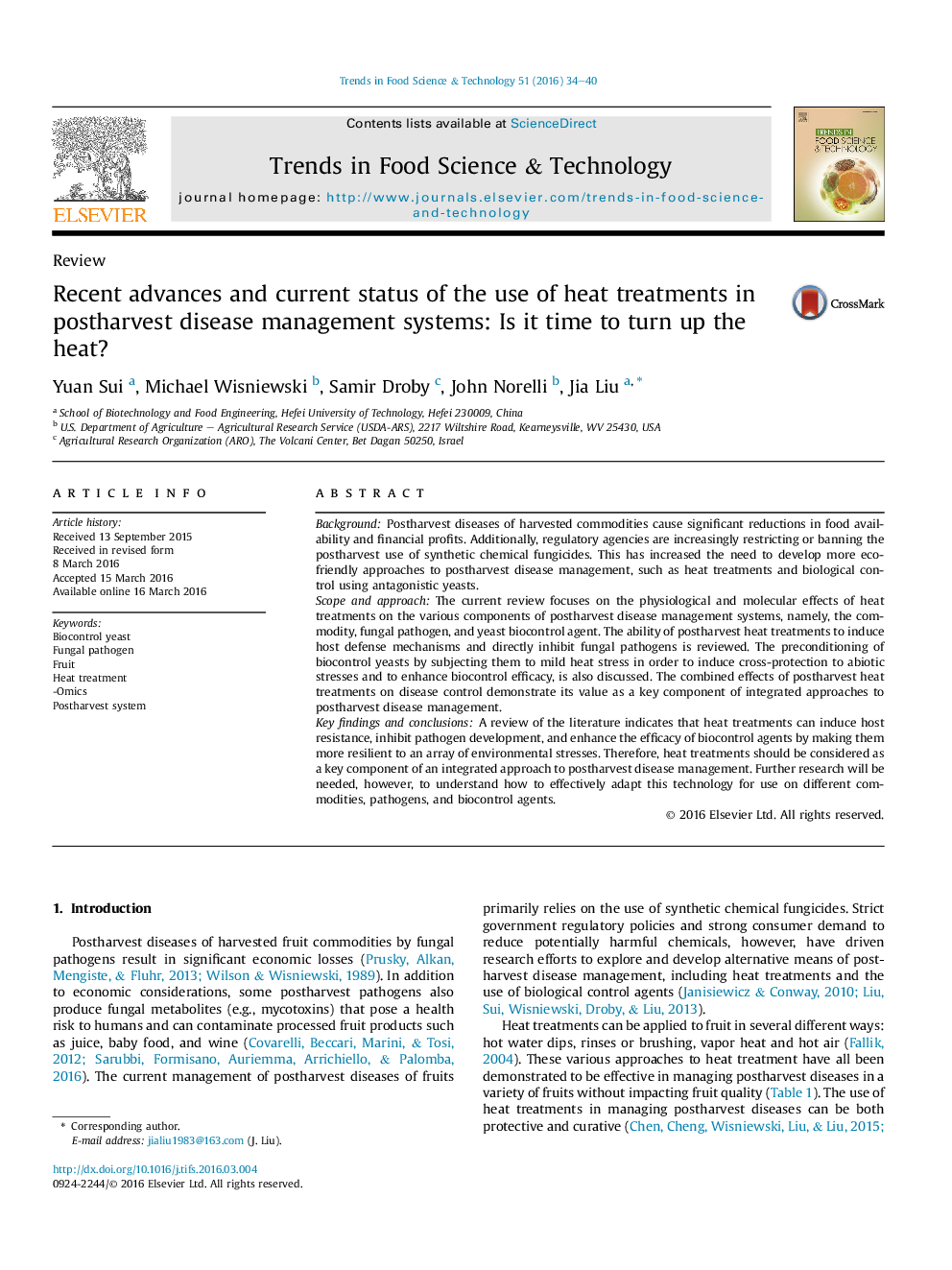| Article ID | Journal | Published Year | Pages | File Type |
|---|---|---|---|---|
| 2098521 | Trends in Food Science & Technology | 2016 | 7 Pages |
•The overall aspects of heat treatments on the postharvest systems have been reviewed.•The effects of heat treatments on the defense response of fruit are highlighted.•The direct inhibitory effects of heat treatments on fungal pathogens are discussed.•Combining heat treatments with biocontrol yeasts results in enhanced efficacy.
BackgroundPostharvest diseases of harvested commodities cause significant reductions in food availability and financial profits. Additionally, regulatory agencies are increasingly restricting or banning the postharvest use of synthetic chemical fungicides. This has increased the need to develop more eco-friendly approaches to postharvest disease management, such as heat treatments and biological control using antagonistic yeasts.Scope and approachThe current review focuses on the physiological and molecular effects of heat treatments on the various components of postharvest disease management systems, namely, the commodity, fungal pathogen, and yeast biocontrol agent. The ability of postharvest heat treatments to induce host defense mechanisms and directly inhibit fungal pathogens is reviewed. The preconditioning of biocontrol yeasts by subjecting them to mild heat stress in order to induce cross-protection to abiotic stresses and to enhance biocontrol efficacy, is also discussed. The combined effects of postharvest heat treatments on disease control demonstrate its value as a key component of integrated approaches to postharvest disease management.Key findings and conclusionsA review of the literature indicates that heat treatments can induce host resistance, inhibit pathogen development, and enhance the efficacy of biocontrol agents by making them more resilient to an array of environmental stresses. Therefore, heat treatments should be considered as a key component of an integrated approach to postharvest disease management. Further research will be needed, however, to understand how to effectively adapt this technology for use on different commodities, pathogens, and biocontrol agents.
